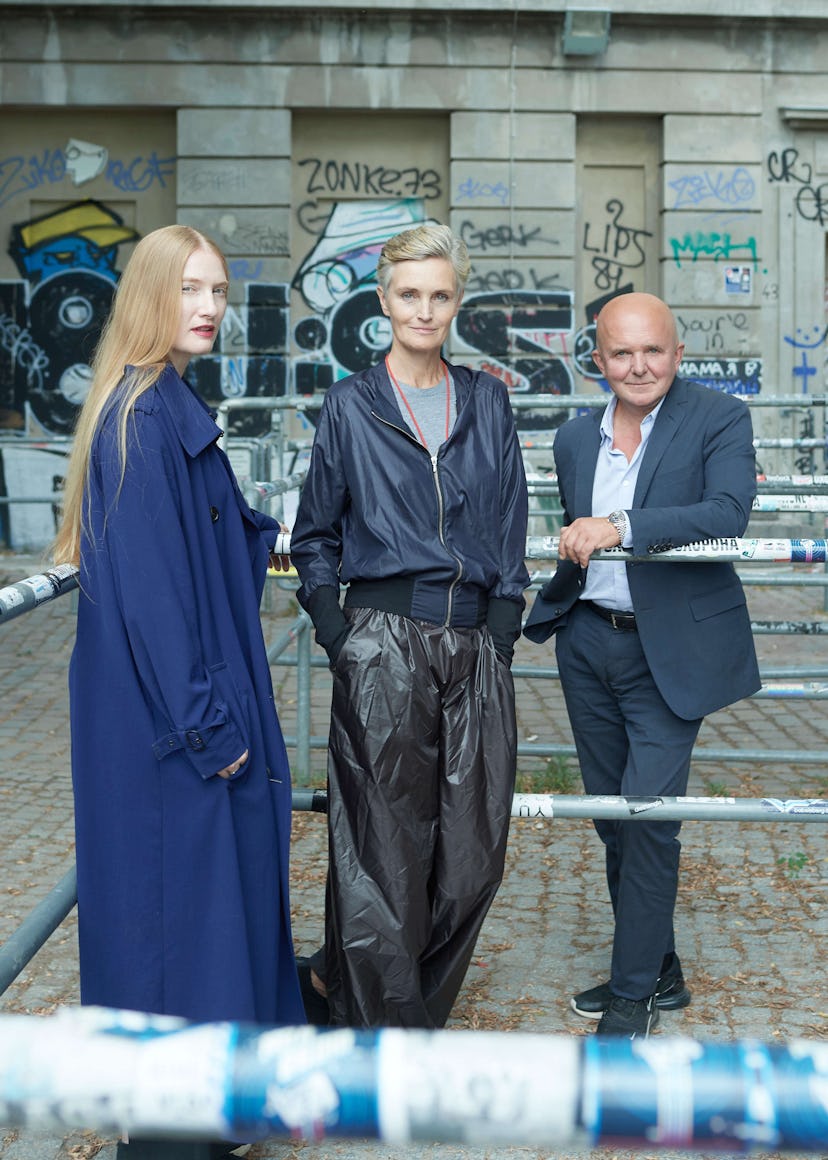At Berghain in Berlin, Art Now Occupies the Dance Floor
The legendary club, once known for its 36-hour parties and strict door policy, finds a new purpose in response to pandemic restrictions.

A few months into the pandemic, the indefinitely closed techno club Berghain started to feel like an addition to Berlin’s long list of depressing monuments. Known for its 36-hour parties, strict door policy and hands-off approach to sex and drug use, Berghain has, since its opening in 2004, offered its patrons an unparalleled level of freedom. Despite its international reputation, it remained the kind of place where people could have more fun in one night than they did in the entire previous year, and had proven itself again and again as a pillar of the city’s LGBTQ community, a constant source of inspiration for creatives, and a cherished second home for a colorful troupe of music aficionados. But after weeks of closure, the formidable and abandoned building that once housed the city’s most iconic venue began to loom over Friedrichshain like a relic from a culture, community and economy lost in time.
Just days ago, proof of life came in the form of a massive banner by the artist Rirkrit Tirvanija, which reads “MORGEN IS DIE FRAGE”, or “tomorrow is the question,” now hanging across the building’s facade. The artwork marks a new beginning for the club, which will reopen to the public today as the site of Studio Berlin, an exhibition that features work made by over 100 artists who live and work in Berlin, including Woflgang Tillmans, Olafur Eliasson, Nasan Tur and Anne Imhof.
STUDIO BERLIN/Berghain, © Rirkrit Tiravanija, courtesy neugerriemschneider Berlin, photo by Noshe.
Studio Berlin is a collaboration between Berghain and the Berlin art collectors Christian and Karen Boros, who in 2003 purchased and renovated a WW2 bunker in the heart of the city, where they exhibit their private collection to the public (by appointment). The Berghain project, which received a €250,000 (roughly $295,000) grant from the city of Berlin, is a meaningful show of solidarity between two of the city’s most essential and endangered cultural assets: its nightlife and art scenes. “It’s sad! Of course, we would prefer that the club were open,” Karen Boros said at the exhibition preview. “But while it can’t be, we felt this was a way to help improve [Berghain’s] situation, and also hopefully, improve it for the artists, who now have a platform where their work can be seen and noticed.” Studio Berlin has also provided work opportunities to the club’s staff, who will be leading tours of the collection.
The artwork inside, 90% of which was created in 2020, is by no means unified in theme or aesthetic; it instead functions as a survey of Berlin’s contemporary art scene, and the resilient and diverse artists who comprise it. The most memorable pieces in the showcase reflect the artists’ personal connections to the club. A colossal quince flower sculpture now hangs over a DJ booth where married artists Pettit Halilaj and Alvaro Urbana first met. Deaf artist Christine Sun Kim contributed a permanent installation to the Panorama Bar dancefloor, which now displays a map of her movements, according to her experience of sound vibrations. Michael Salistorfer adorned the two-tiered smoking area with 26 tongue-in-cheek “extracted” tooth sculptures. The funky pastiche of works, which visitors can see in a 90 minute guided tour (booked in advance online), do make a correlated statement: COVID cannot kill the creativity that defines Berlin — and together, the city’s nightlife and art scenes will rise from the ashes.
STUDIO BERLIN/Berghain, LOVE © Dirk Bell, photo by Noshe.
Although Christian and Karen Boros were perfectly suited to the task of installing artwork in a space so loaded with subcultural capital (the Boros Bunker also served as a fetish club in the 1990s), they were respectfully hesitant to take on the project. “We didn’t want to take away the myth or the essence of the club,” Boros said. “But we realized, with time and tours of the space, that when the lights are on, it is no longer the club people know. It’s something completely different.”
While visitors who have no previous relationship with the club will now be awarded an opportunity to see art in one of the world’s most mysterious and alluring venues, visitors who do have a relationship should be prepared to face a painful reality: Berghain, as they once knew it, is gone. Until a vaccine comes along, tomorrow will remain the question for Berghain, and for Berlin nightlife at large. Fortunately, Studio Berlin is here to offer solace throughout this period of uncertainty, and an assurance that Berlin’s most iconic club will remain a living, breathing cultural space.
For more information about visiting hours and tours, visit the Studio Berlin website.